ID-DOC: general search
Here you can enter a general keyword and perform a general search.
??? What are these question marks doing here? These represent tools which we know by a Dutch or French name, but who's English name is yet unknown. Suggestions are always welcome!
If you cannot find a certain tool, or if you experience other problems with this page, please let us know at info@mot.be.
Search for: tool
Showing search results 1,001 - 1,050
1,492 results found
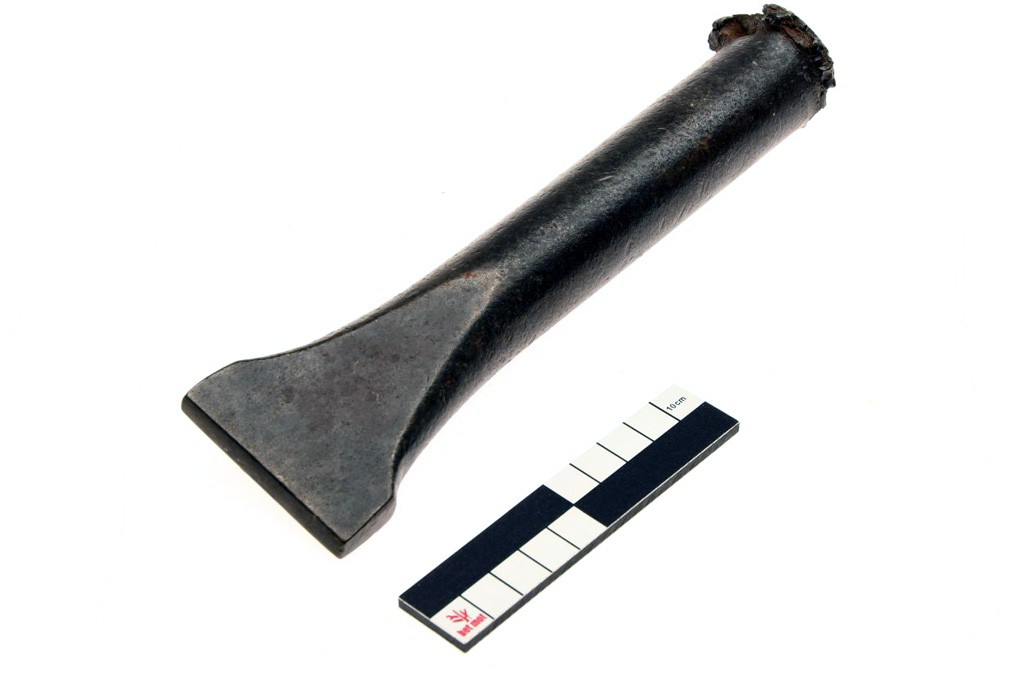
Pitcher
The pitcher is a short, heavy chisel with flattened cutting edge (approx. 4
mm wide) to chop off large pieces of a rough natural stone block as a first
operation and thus get a good start for shaping the edge. The stonecutter
strikes the pitcher with his stonemason’s hammer. The paviour uses it to
break excess pieces of paving tiles and split pavement stones (1). This
pitching tool is to be distinguised from the charring chisel and the flat
chisel. [MOT] (1) JELLEMA: 38-39.
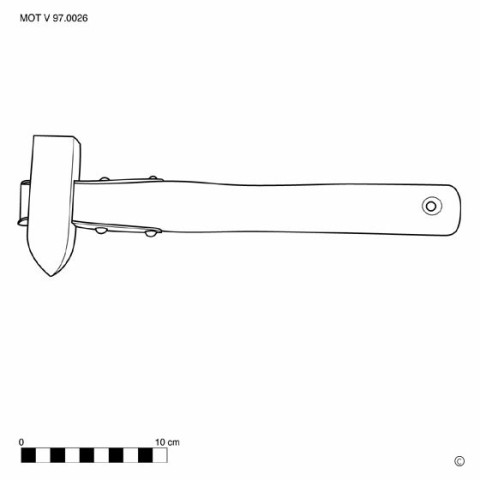
Piton hammer
For his safety and, in artificial climbing, to get higher, the first
climber puts hooks in the crevices of the rock; the latter removes them.
The first work can be done with a light fist. However, pulling out the
hooks is sometimes difficult and various hammers have been devised to
facilitate this. All weigh about 500-670g and usually consist of a square
face to drive the hooks in, and a curved pin with notch that can be
inserted into the eye of the hook. The handle then becomes the power arm of
a lever of the first kind, like a claw hammer. Sometimes there is also a
hole in the working part, where a carabiner can be picked up. By forming a
chain of three carabiners, the last of which is inserted into the eye of
the hook, that hook can sometimes be knocked out. The pin or the more or
less pointed end of the working part also serves to drive clamping wedges
into gaps. The wooden handle was replaced by the metal, which does not come
off. Usually a hole is drilled in the end of the stem...
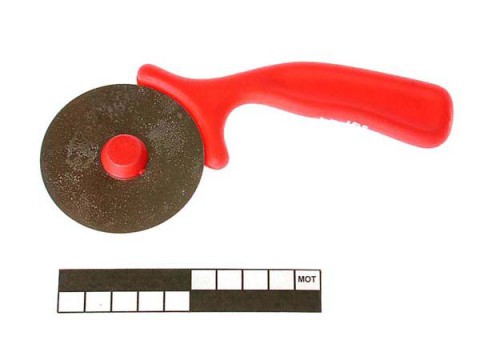
Pizza wheel
Kitchen utensil with a relatively large (approx. 6-7 cm diameter) and
sturdy stainless steel cutting wheel, fixed in a wooden, plastic or
aluminum handle that flares out towards the wheel to protect the fingers.
With a pizza wheel you can cut a pizza base out of the dough and, when the
pizza is baked, you can cut it into slices with it. To be distinguished
from the pastry cutting wheel. [MOT]
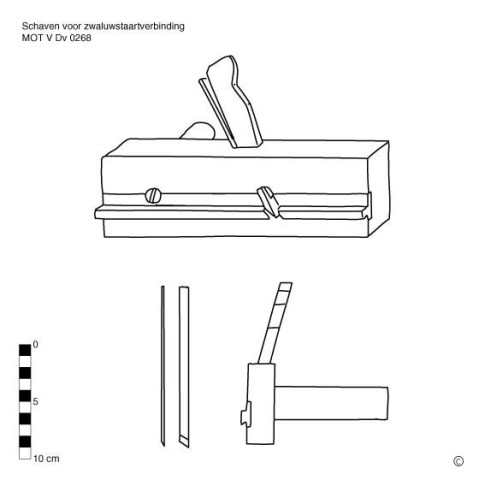
Plane for dovetail joints
This text can only be consulted in Dutch
<https://www.mot.be/resource/Tool/plane-for-dovetail-joints?lang=nl>
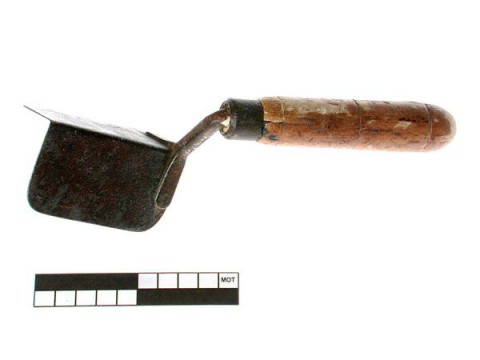
Plasterer's corner trowel
This text can only be consulted in Dutch
<https://www.mot.be/resource/Tool/plasterers-corner-trowel?lang=nl>
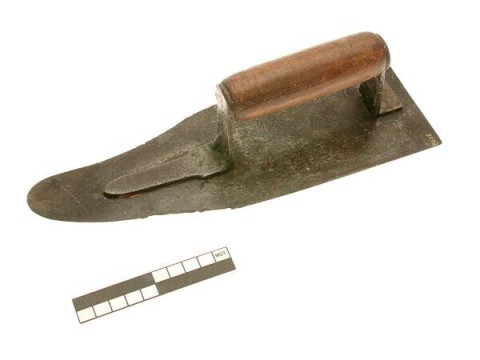
Plasterer's finishing trowel
This text can only be consulted in Dutch
<https://www.mot.be/resource/Tool/plasterers-finishing-trowel?lang=nl>
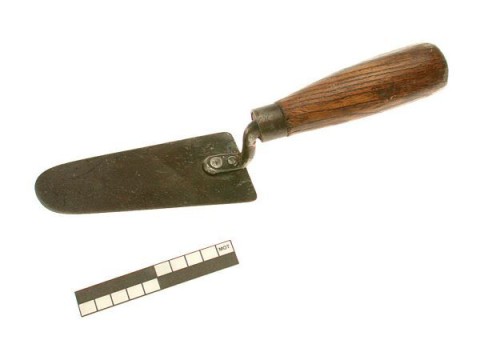
Plasterer's margin trowel
This text can only be consulted in Dutch
<https://www.mot.be/resource/Tool/plasterers-margin-trowel?lang=nl>
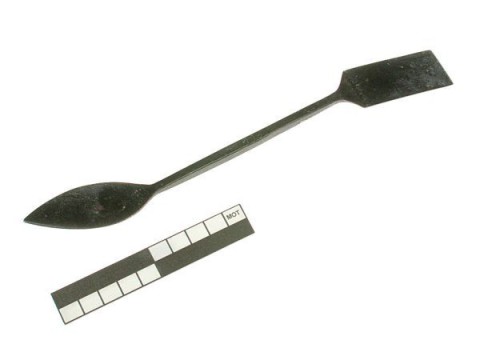
Plasterer's ornamental tool
This text can only be consulted in Dutch
<https://www.mot.be/resource/Tool/plasterers-ornamental-tool?lang=nl>
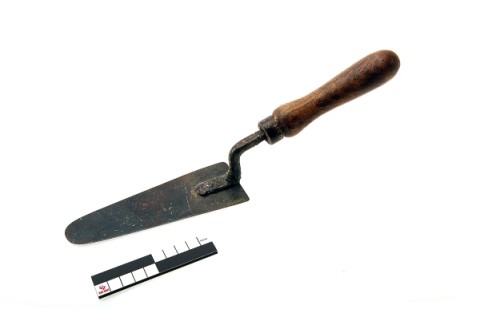
Plasterer's trowel
This text can only be consulted in Dutch
<https://www.mot.be/resource/Tool/plasterers-trowel?lang=nl>
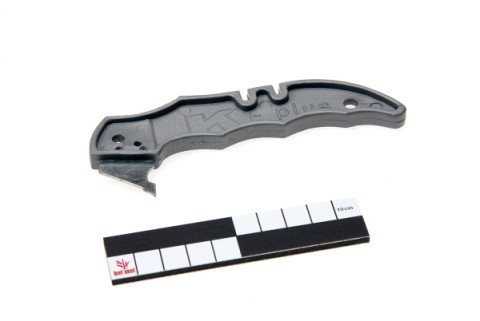
Plastic sheet cutting knife
This text can only be consulted in Dutch
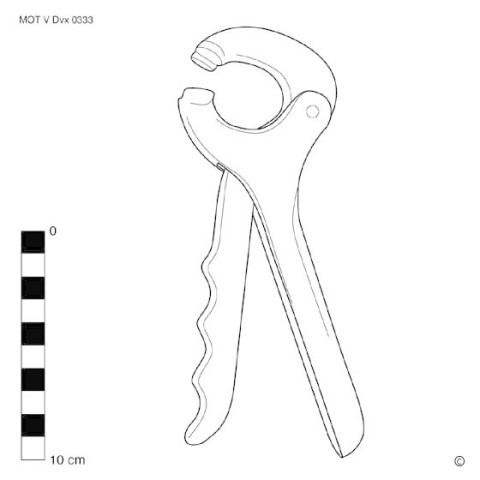
Plate tongs
This text can only be consulted in Dutch
<https://www.mot.be/resource/Tool/plate-tongs?lang=nl>
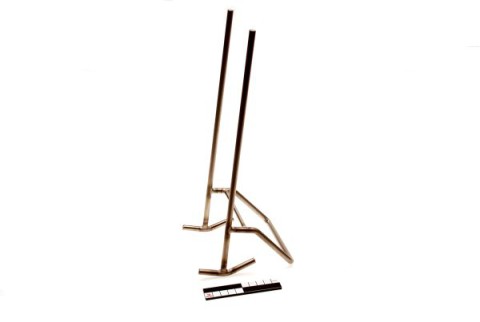
Plate-rack for bucket
This text can only be consulted in Dutch
<https://www.mot.be/resource/Tool/plate-rack-for-bucket?lang=nl>
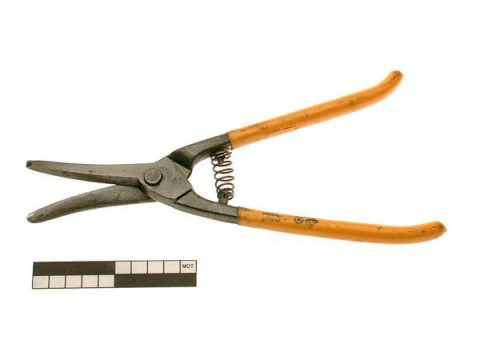
Plate-shears
This text can only be consulted in Dutch
<https://www.mot.be/resource/Tool/plate-shears?lang=nl>
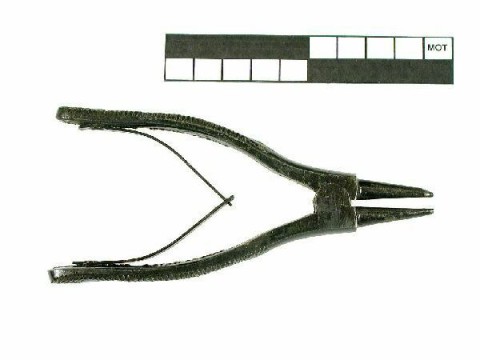
Pliers for circlips
This text can only be consulted in Dutch
<https://www.mot.be/resource/Tool/pliers-for-circlips?lang=nl>
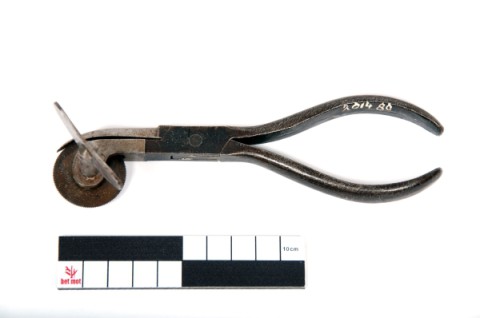
Pliers for cutting rings
These pliers are used to saw through a glued ring, which for example cannot
be removed with soap or wire, without damaging the skin. There are also
models for left-handers. More technical information on the Dutch version of
this page. [MOT]
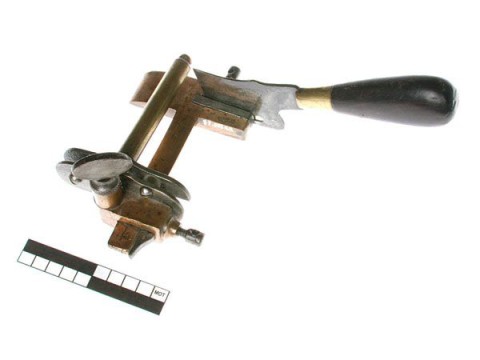
Plough gauge
This text can only be consulted in Dutch
<https://www.mot.be/resource/Tool/plough-gauge?lang=nl>
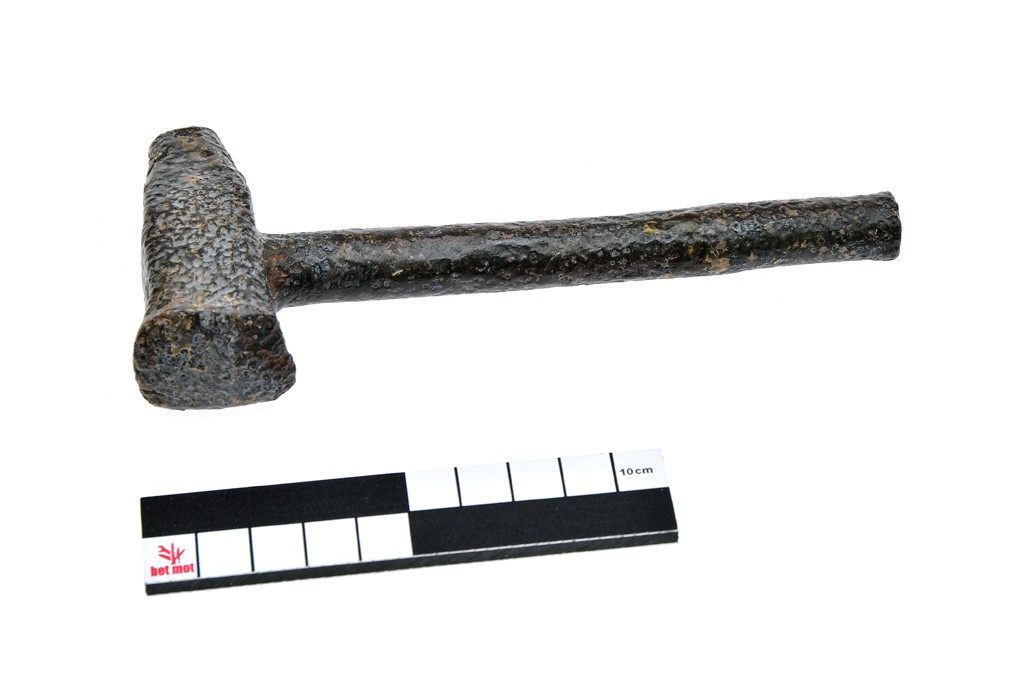
Plough hammer
This text can only be consulted in Dutch
<https://www.mot.be/resource/Tool/plough-hammer?lang=nl>
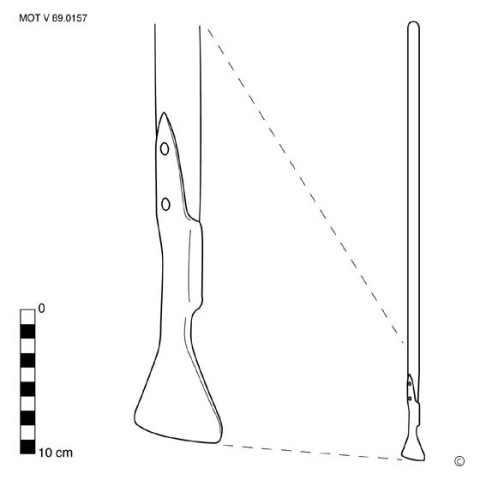
Plough staff
This text can only be consulted in Dutch
<https://www.mot.be/resource/Tool/plough-staff?lang=nl>
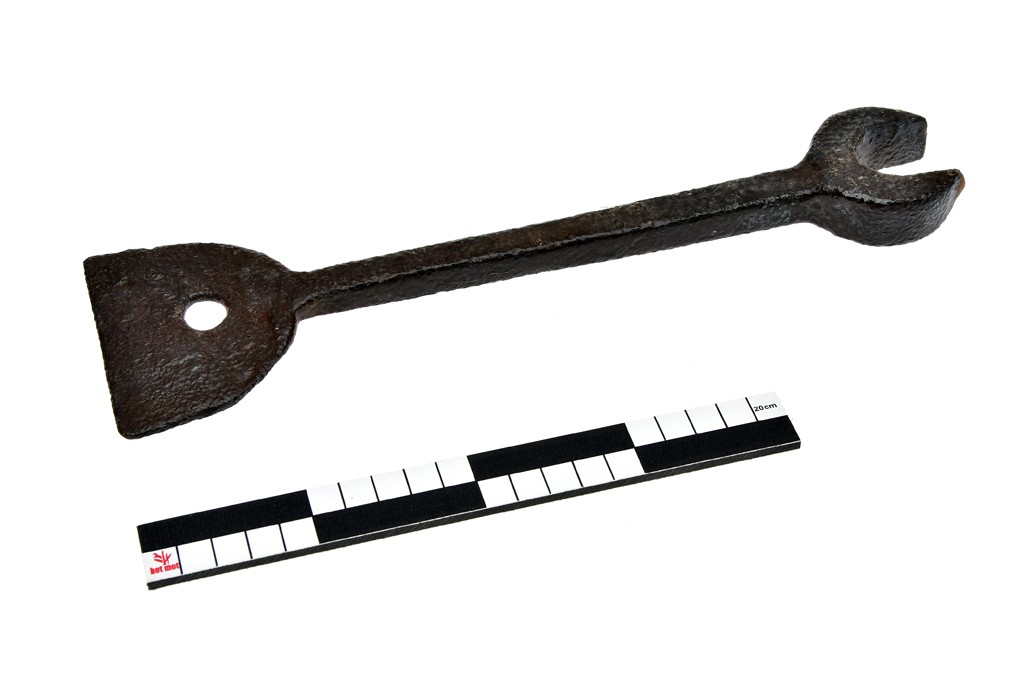
Plough wrench
This text can only be consulted in Dutch
<https://www.mot.be/resource/Tool/plough-wrench?lang=nl>
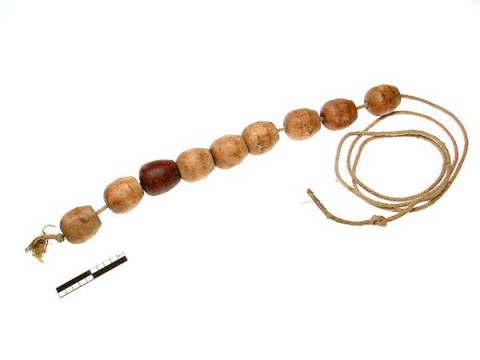
Plumber bobbins
This text can only be consulted in Dutch
<https://www.mot.be/resource/Tool/754?lang=nl>
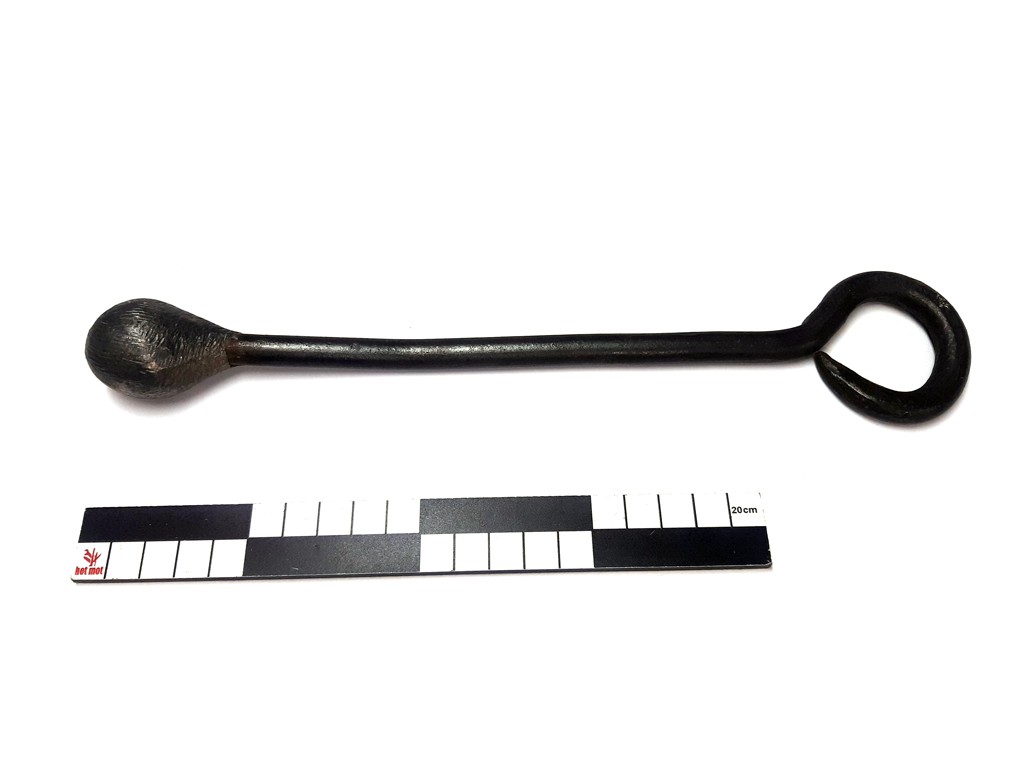
Plumber's iron
This text can only be consulted in Dutch
<https://www.mot.be/resource/Tool/plumbers-iron?lang=nl>
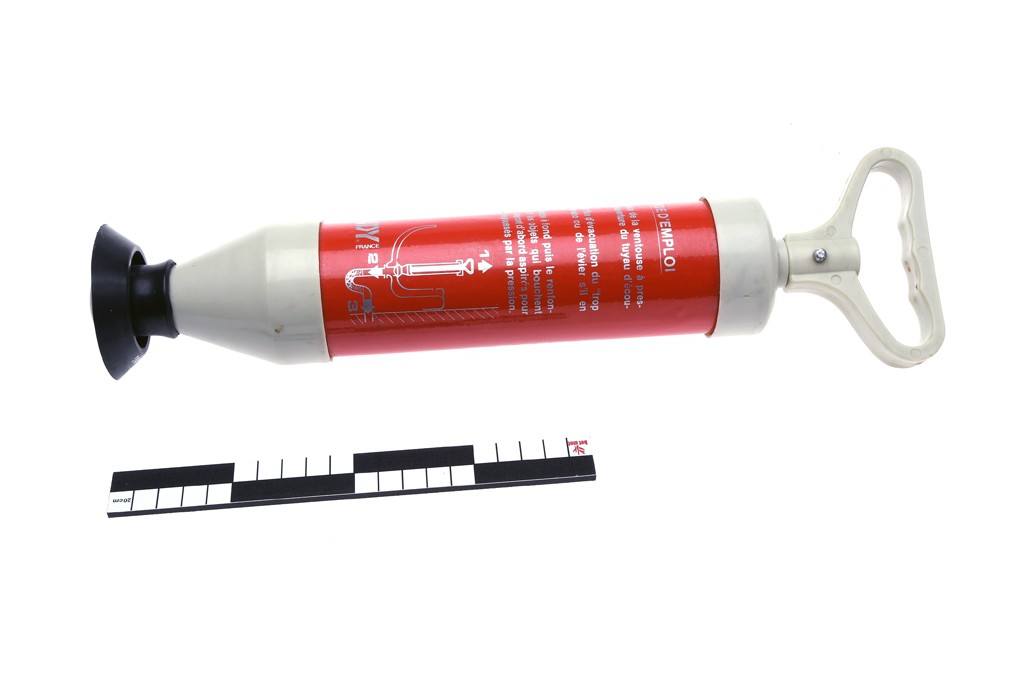
Plunger
This text can only be consulted in Dutch
<https://www.mot.be/resource/Tool/plunger?lang=nl>
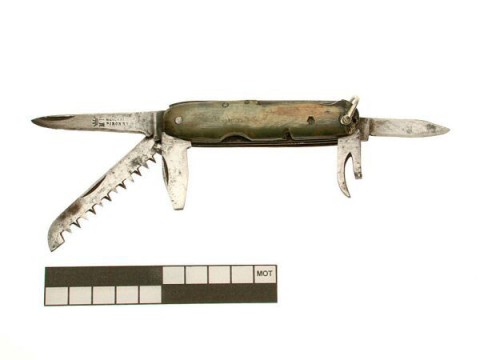
Pocket knife
This text can only be consulted in Dutch
<https://www.mot.be/resource/Tool/pocket-knife?lang=nl>
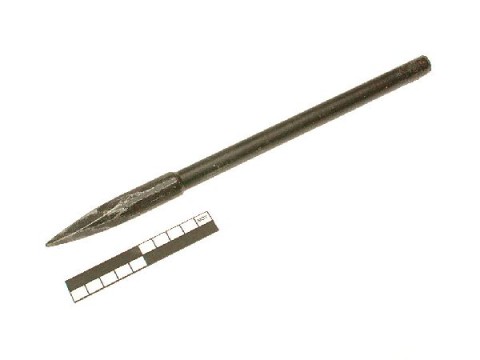
Pointed chisel
This text can only be consulted in Dutch
<https://www.mot.be/resource/Tool/pointed-chisel?lang=nl>
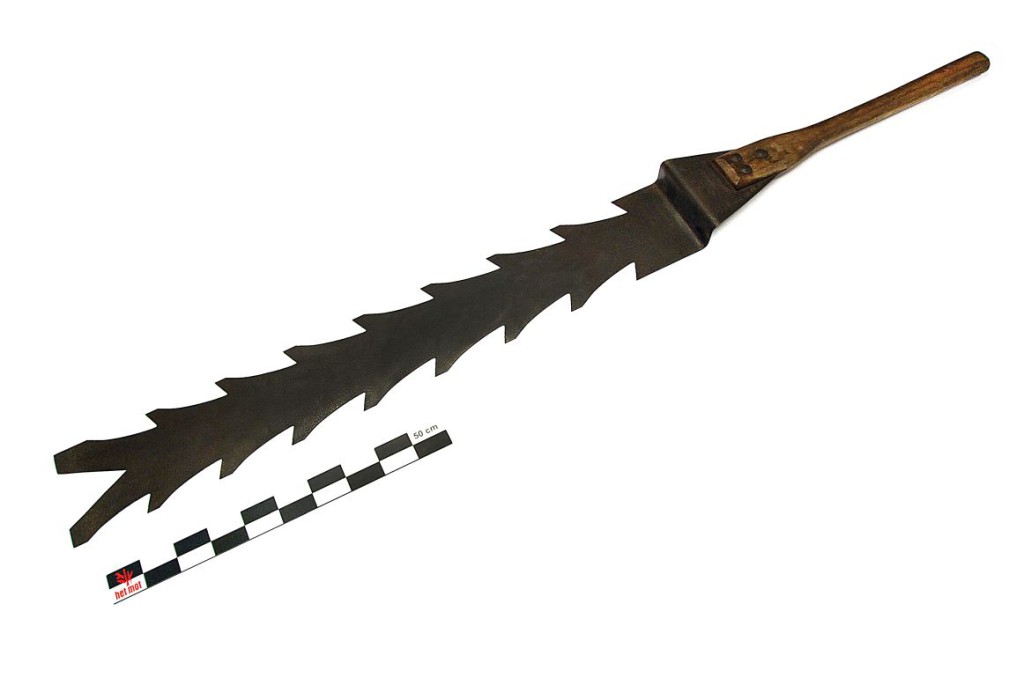
Pointing sword (bricklayer)
The pointing sword (1) is a stonemason's hand tool that was used when
placing large blocks of natural stone. These blocks are not placed in
mortar like bricks, they are placed on wooden blocks after which the mortar
is applied between the stone blocks using this tool (2). The vertical
joints are also filled in this way. The large notches on both sides
therefore serve to push the mortar forward between the stone blocks (3).The
thin metal blade can be attached in line with the wooden straight handle or
form an angle with it. The blade is doubly serrated in shape, with large
notches facing forward. The length of the joint sword depends on the
dimensions of the masonry that you want to build with it.The pointing sword
is similar to the slate ripper but the blade is thinner, the notches are
directed forward and the handle does not end in a hook. [MOT](1)
Translation of 'voegzwaard' in Dutch. The proper name in English is yet
unknown.(2) Trade catalogue MM. Civet, Crouet, Gautier & Co: Exploitation...
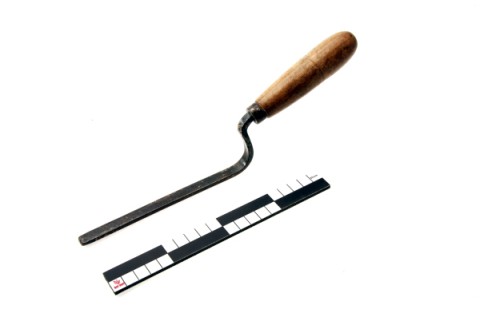
Pointing trowel
This text can only be consulted in Dutch
<https://www.mot.be/resource/Tool/pointing-trowel?lang=nl>
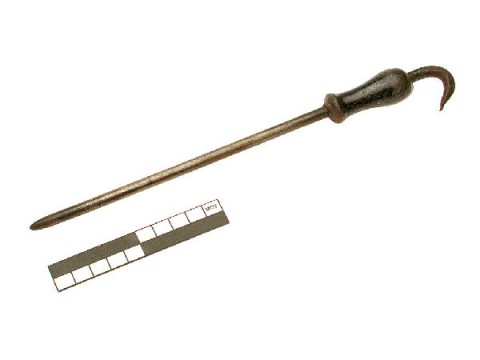
Poker
Iron round or flat rod (approx. 40-100 cm) with a pointed end, bent or not
bent, which is used to start the fire in a fireplace, in a stove, a heating
boiler or an oven. Usually the poker ends in a hook or a ring with which it
can be hung. For the fireplace or the kettle, there are sets with a poker,
an oven-rake, a fire shovel (stoker) and clinker tongs or a pair of fire
tongs. [MOT]
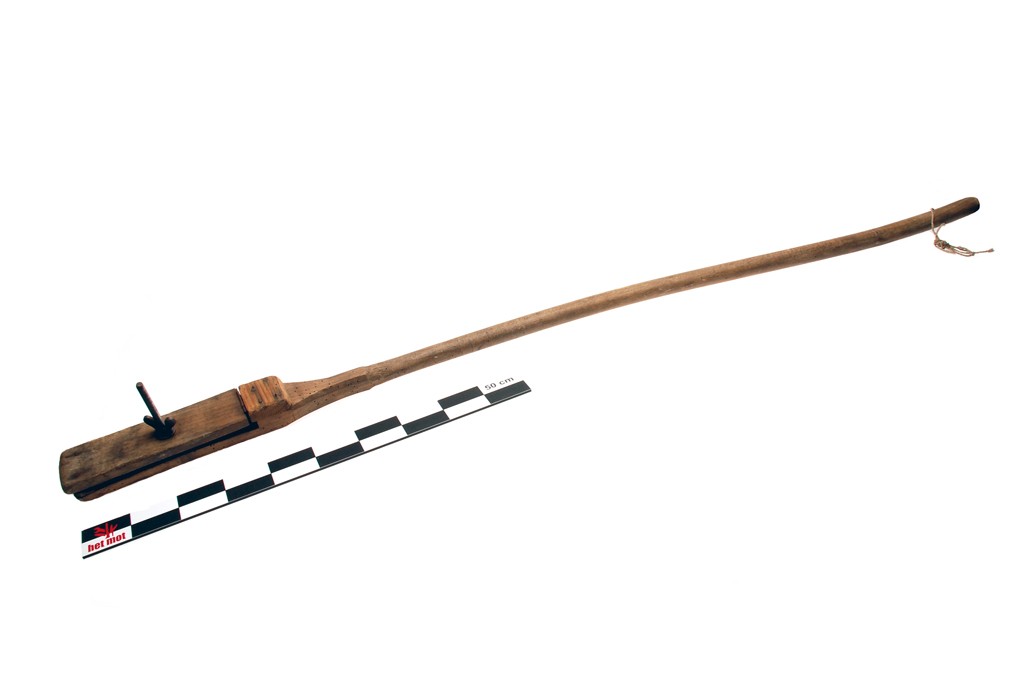
Polish scrubbing stick
This text can only be consulted in Dutch
<https://www.mot.be/resource/Tool/polish-scrubbing-stick?lang=nl>
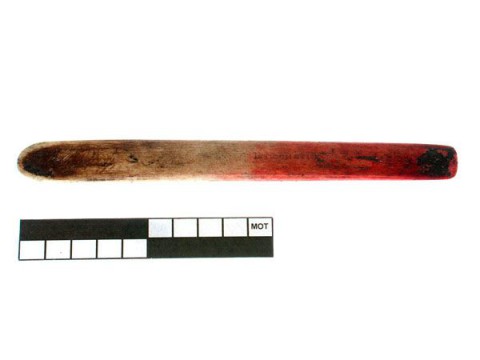
Polishing bone
This text can only be consulted in Dutch
<https://www.mot.be/resource/Tool/polishing-bone?lang=nl>
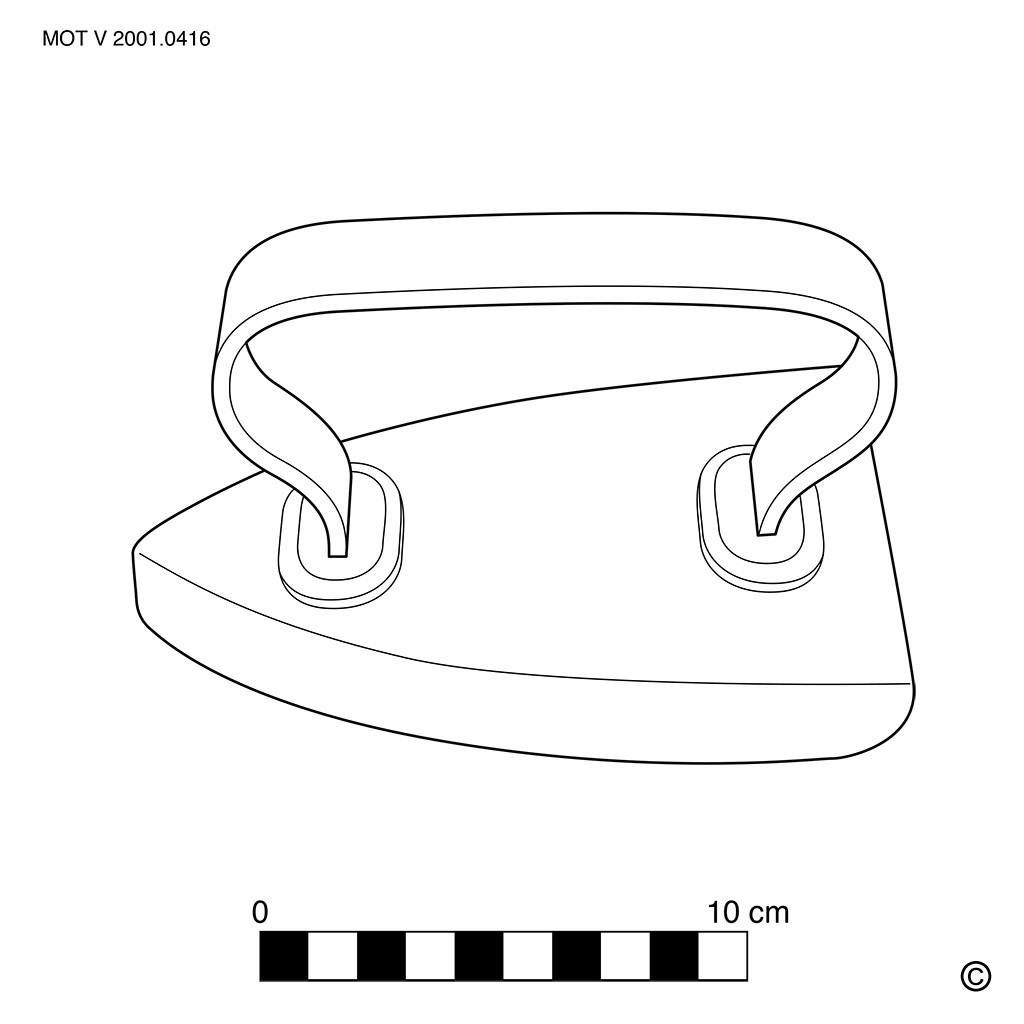
Polishing iron
This text can only be consulted in Dutch
<https://www.mot.be/resource/Tool/polishing-iron?lang=nl>
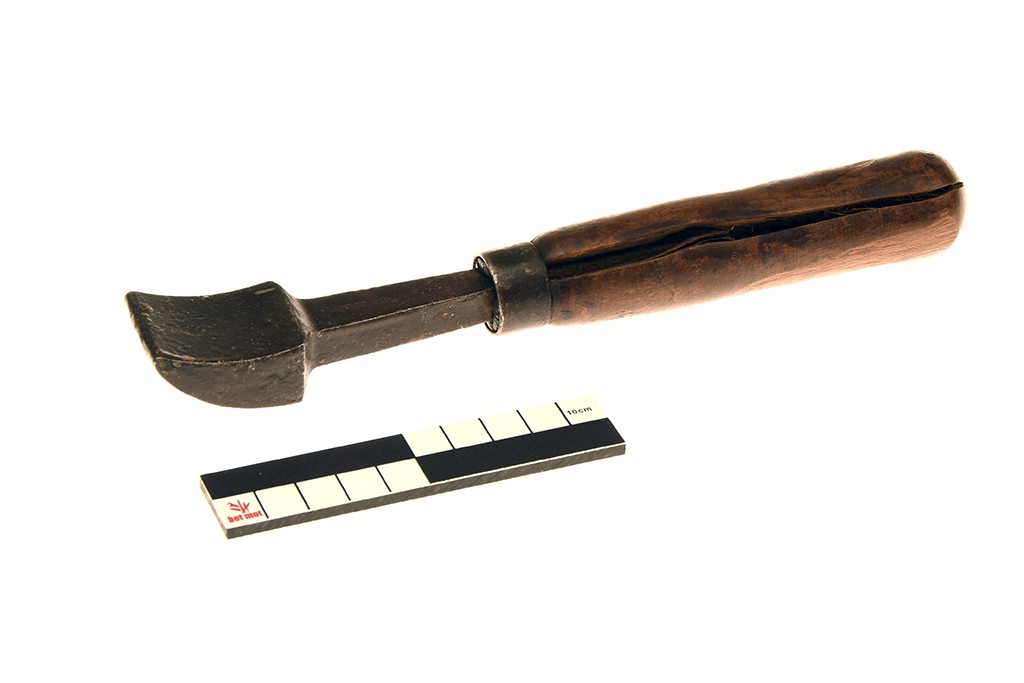
Polishing iron (bookbinder)
This text can only be consulted in Dutch
<https://www.mot.be/resource/Tool/polishing-iron-bookbinder?lang=nl>
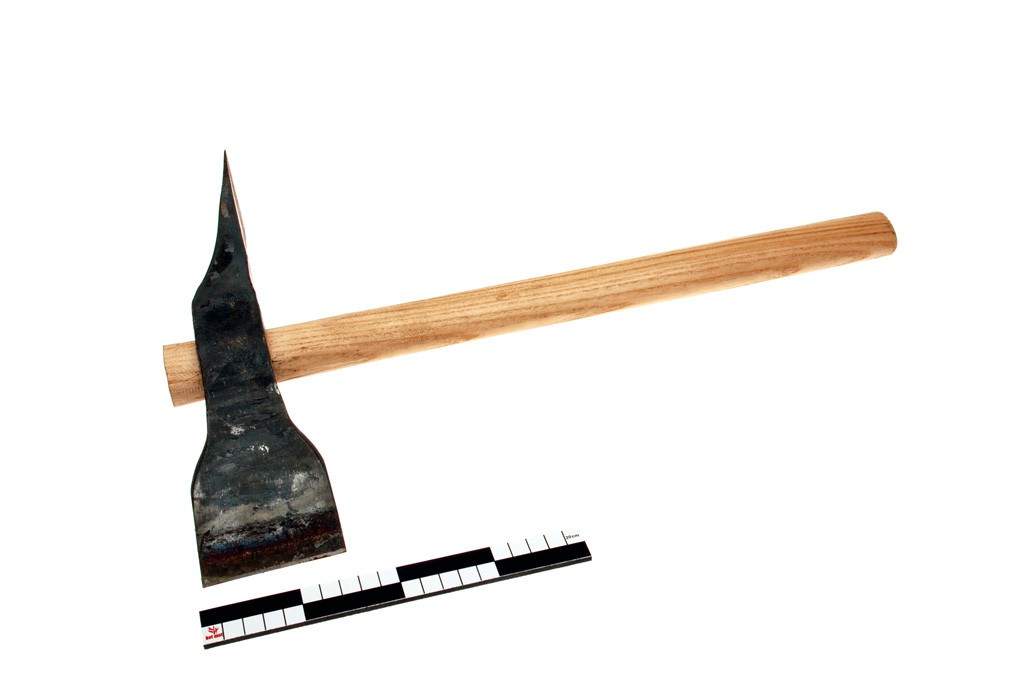
Polka hammer
The polka hammer is a relatively light (1.7 to 2.5 kg) hand tool with one
or two horizontal cuts to work softer stone types. Often used for surface
finishing of panels and reliefs. For more technical information, see the
Dutch page. [MOT]
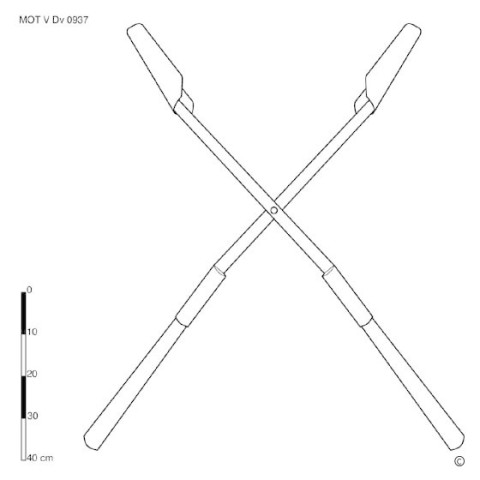
Post hole digger
This text can only be consulted in Dutch
<https://www.mot.be/resource/Tool/post-hole-digger?lang=nl>
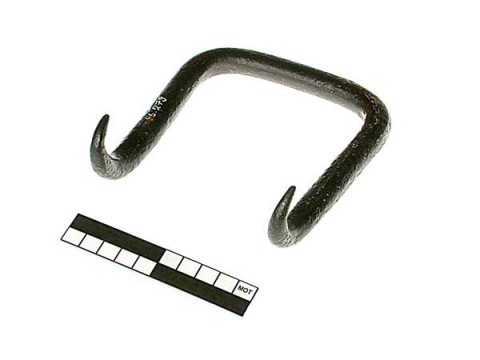
Pot lifter
This text can only be consulted in Dutch
<https://www.mot.be/resource/Tool/pot-lifter?lang=nl>
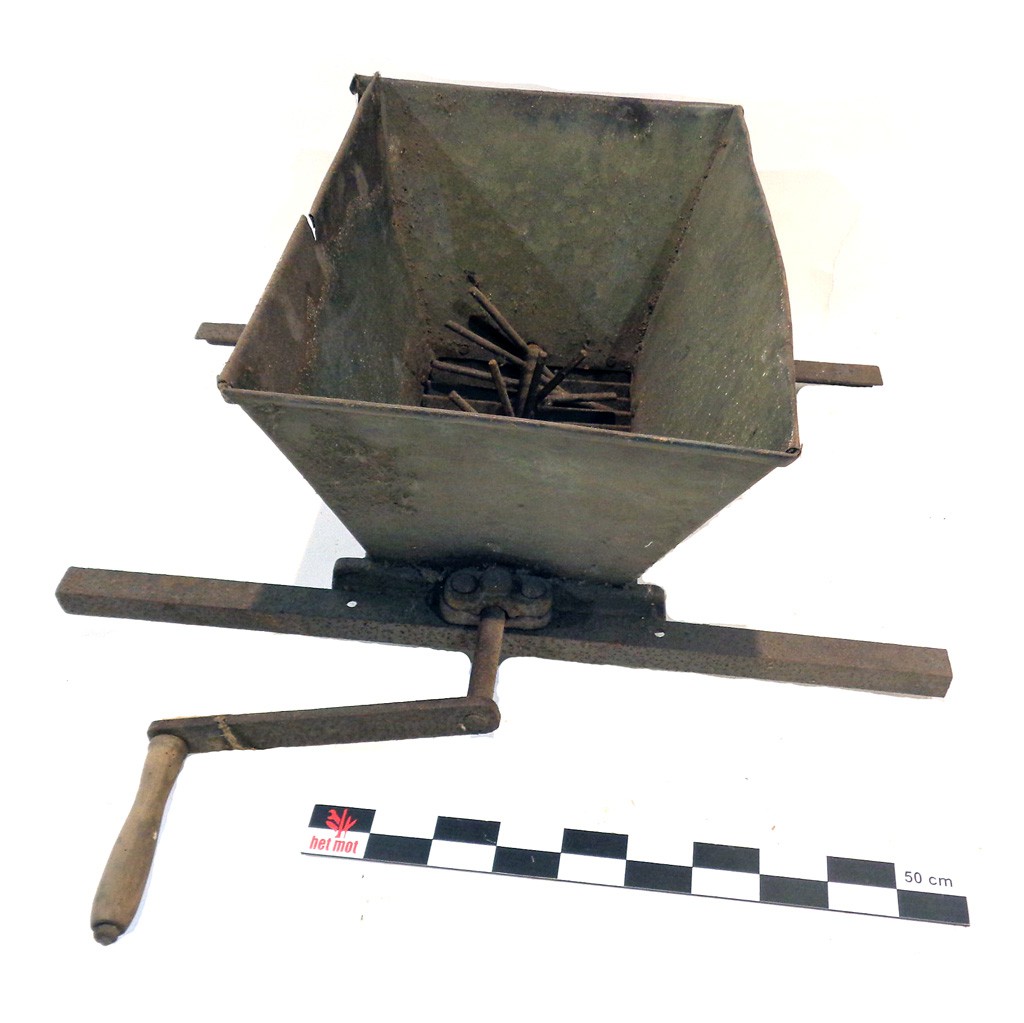
Potato crusher
This text can only be consulted in Dutch
<https://www.mot.be/resource/Tool/potato-crusher?lang=nl>
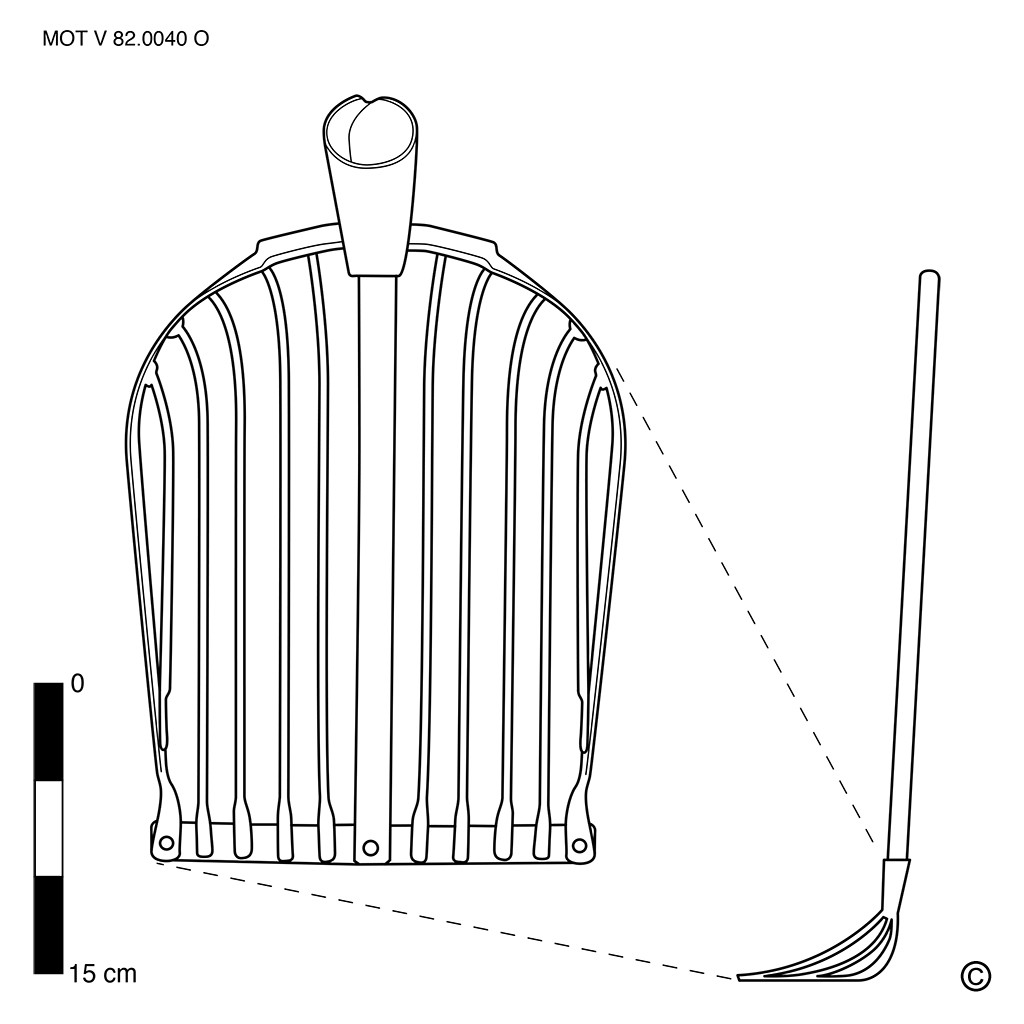
Potato fork
This text can only be consulted in Dutch
<https://www.mot.be/resource/Tool/potato-fork?lang=nl>
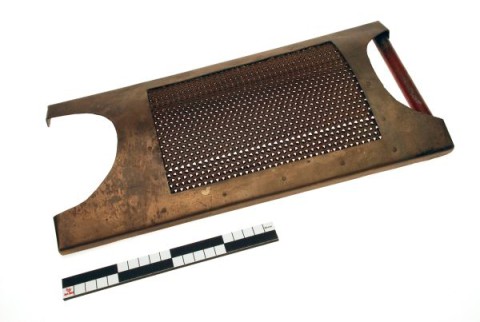
Potato grater
Elongated (approx. 50 cm long; approx. 20 cm wide), convex grater with
fairly coarse triangular pierced holes with which raw potatoes are grated.
It is cut semicircular on one short side; on the other short side it has a
handle. The grated potatoes were mixed with flour, eggs and bacon to make a
kind of pancake. [MOT]
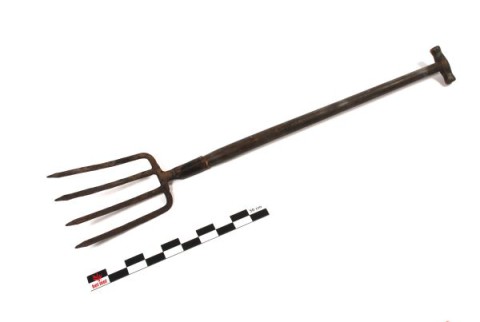
Potato lifting fork
Potatoes can be harvested with a garden spade, a hoe, a potato harvester or
a potato lifting fork. The latter has 3 to 4 wide and flat or, in cross
section, triangular teeth with pointed ends (approx. 20-30 cm long), which
are attached to a wooden T or D handle (approx. 1 m) . To scoop potatoes, a
potato fork is used, the teeth of which are much closer together and end in
balls so as not to damage the potatoes. Can be distinguished from the
digging fork. See also dung fork. [MOT]
Potato masher
Kitchen utensil that can be used to crush potatoes and other vegetables. It consists of a round, possibly convex, wooden disc with a stem. With this, the boiled potatoes are pressed through the holes of a colander. The tool can also work in a mashed potatoes strainer and then its shape is adapted to it (1). In addition to the wooden puree masher, there are also metal models, made of iron, aluminum or sheet iron. With these tools, with an open stamping part, you no longer have to work in a colander or a sieve. See also potato masher (cattle). [MOT] (1) Eg. LUCAS s.d .: 26.
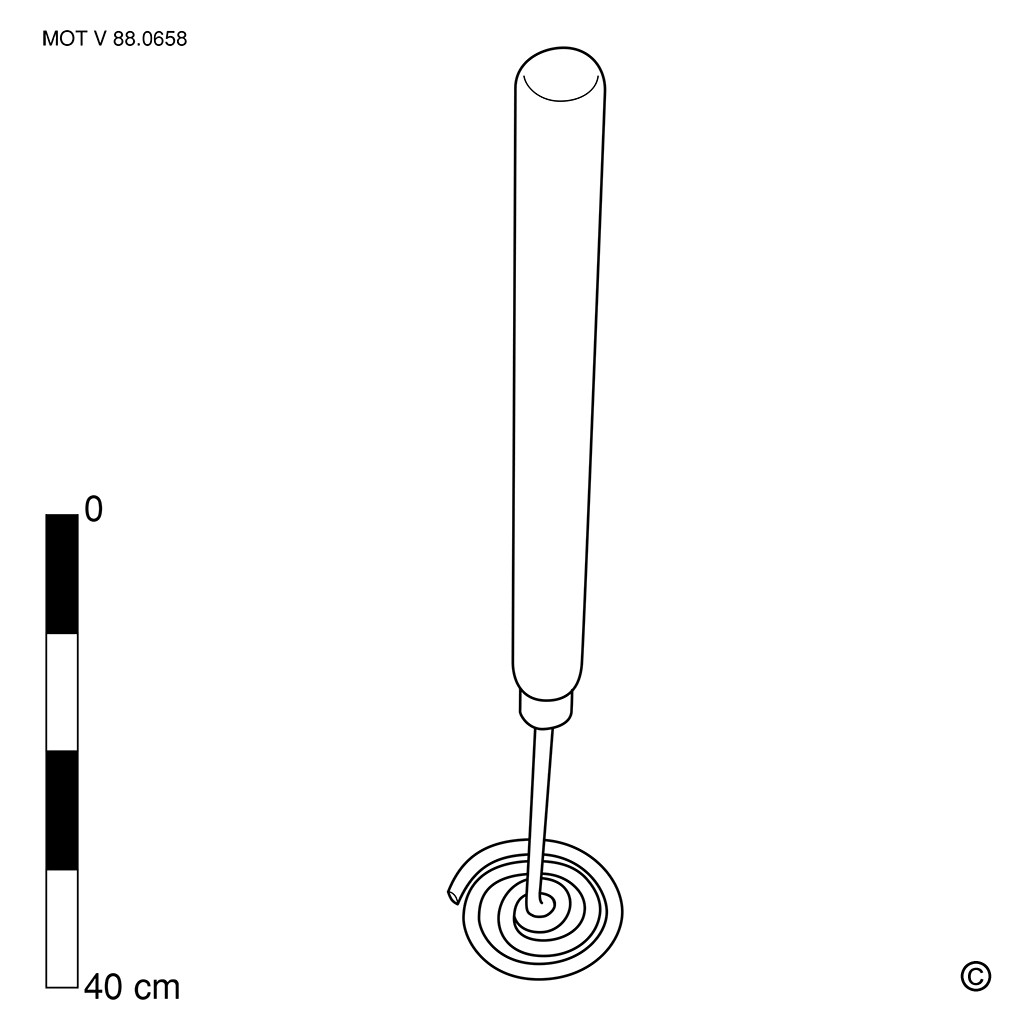
Potato masher (cattle)
After the potatoes, turnips, beets and vegetables, which will be used as
animal feed, have been transferred from the kettle in which they were
cooked (see potato spoon) to a tub, they are crushed with a potato masher.
The potato masher is a wooden or iron stamper in all shapes. It can be a
round piece of wood, thinner at the top than at the bottom. It can also be
a round grid (approx. Diam. 13-15 cm) that is connected to the stem
(approx. 55-80 cm) via a fork-shaped intermediate piece (approx. 20-25 cm).
Sometimes the masher is also forged in the shape of an S. See also the
potato masher to make puree. [MOT]
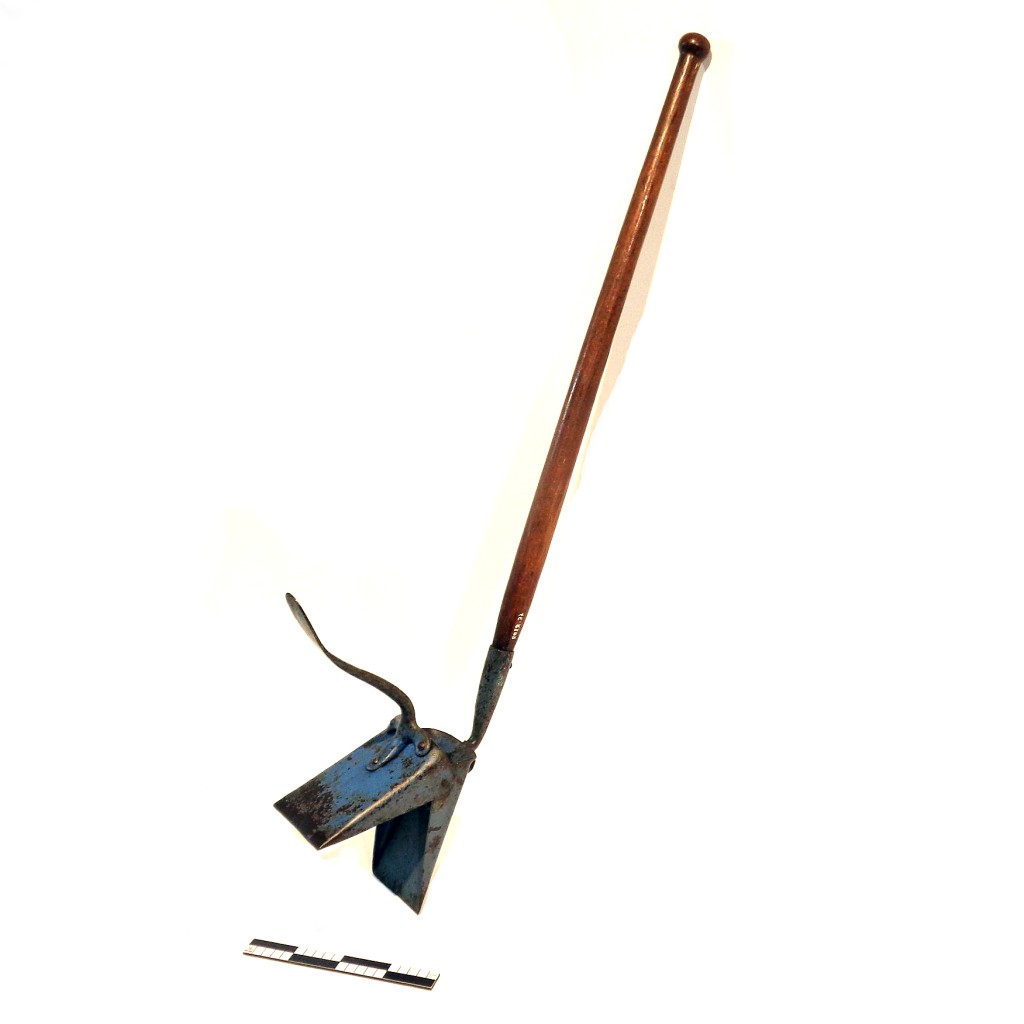
Potato planter
This text can only be consulted in Dutch
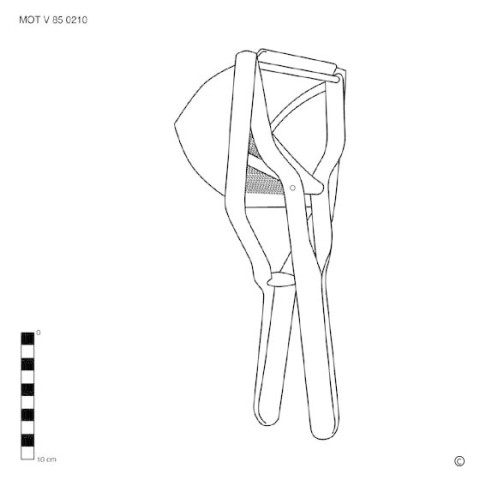
Potato ricer
Potatoes can be mashed more easily into puree with a potato ricer. The
boiled potatoes are placed in the container and the tongs are squeezed
shut. The potatoes are pressed through the holes of the ricer. See also the
puree strainer. [MOT]
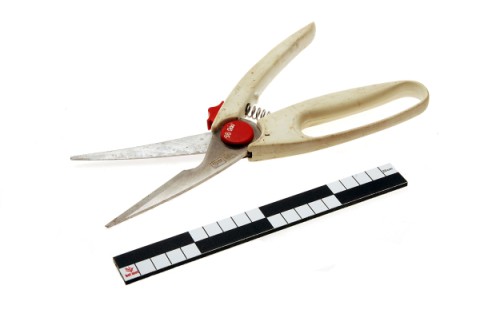
Poultry shears
This text can only be consulted in Dutch
<https://www.mot.be/resource/Tool/poultry-shears?lang=nl>
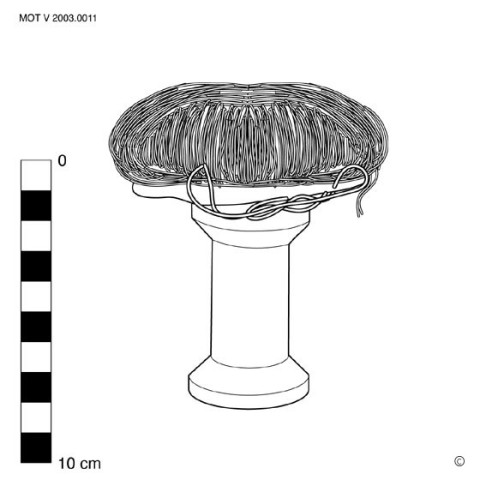
Pressure pad during soldering
(1) Proper name yet unknown.
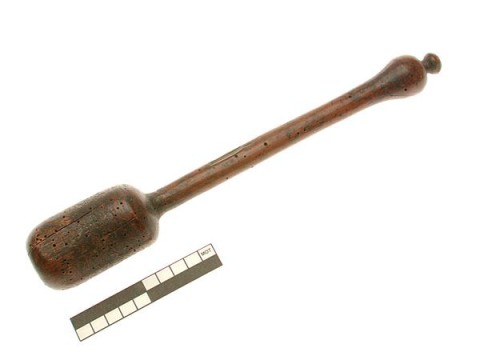
Priest
The priest is a light (approx. 150 gr) bat-shaped hand tool of about 30 cm
long made of wood, copper or plastic and with or without a widened (diam.
approx. 3-4 cm) end (length approx. 6-12 cm) which is often weighted with
lead. With a priest, the angler gives the caught fish a short, hard blow to
the head to switch off the brain. This either to kill the fish immediately
or to stun it before killing it with another technique, such as slitting
its throat, for example. The handle is also used in the same way on some
folding fishing knives. [MOT]
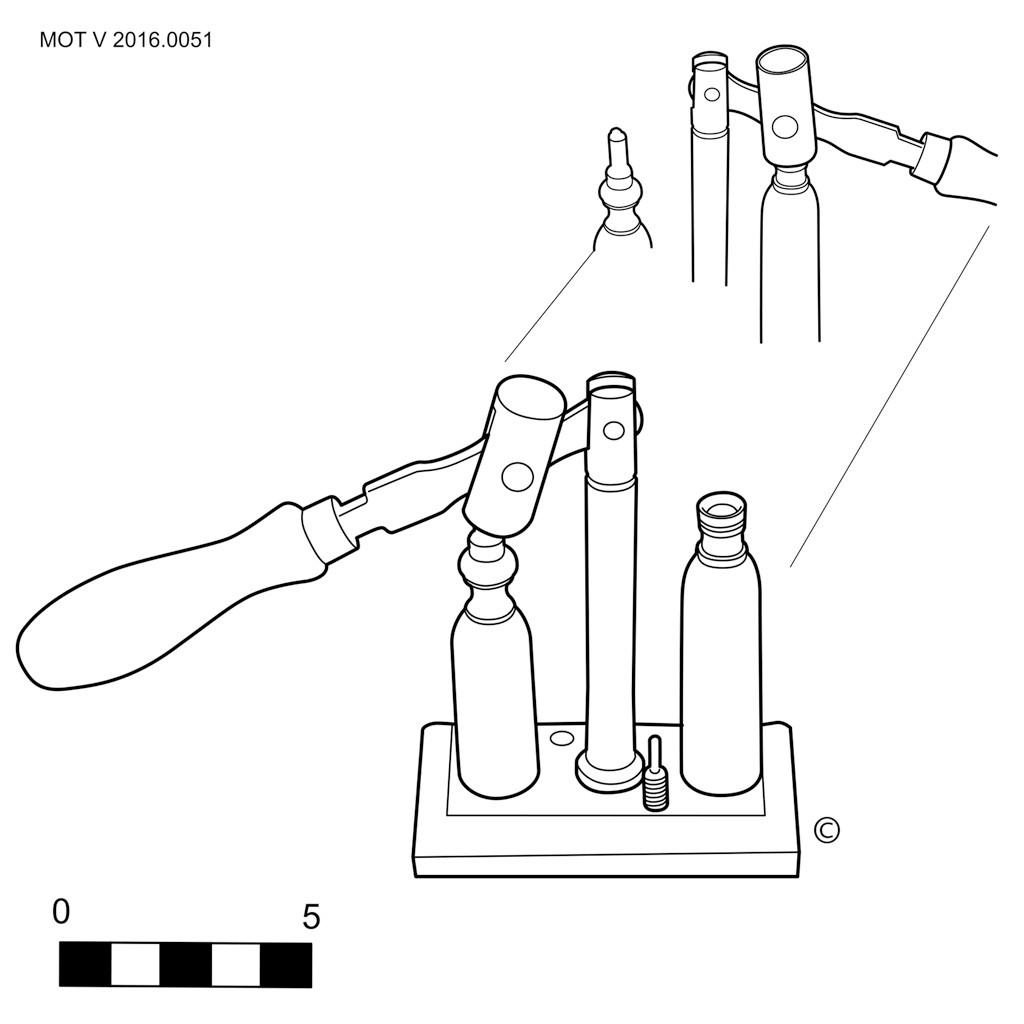
Priming tool
This text can only be consulted in Dutch
<https://www.mot.be/resource/Tool/priming-tool?lang=nl>
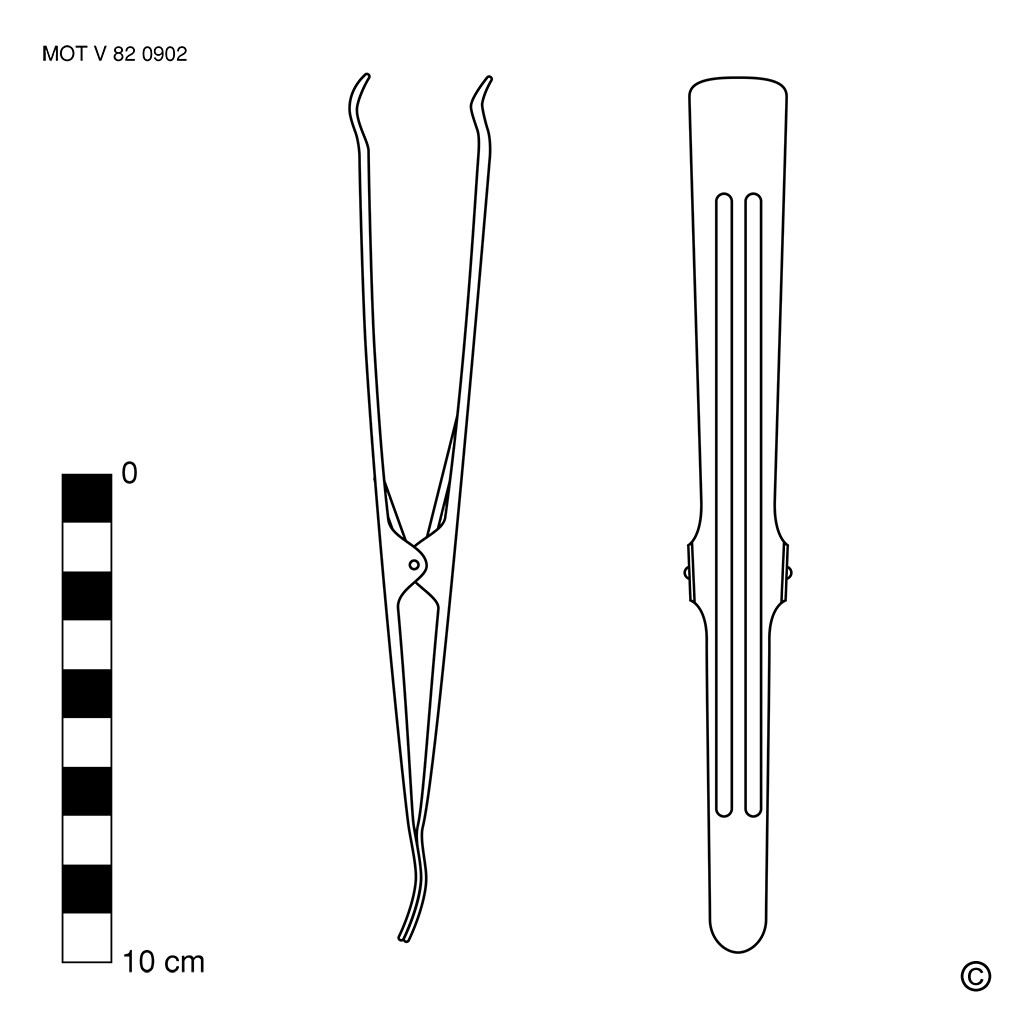
Print tongs
Negatives and prints of photos can be easily grasped with these print
tongs. It consists of a U-shape that is squeezed shut. Sometimes both arms
are also linked halfway by a hinge and a spring keeps the tool open. It is
very similar to pancake tongs. [MOT]
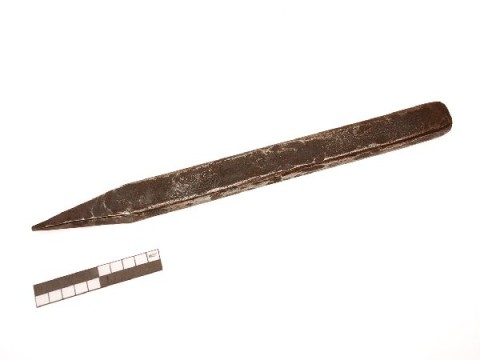
Pritchel
After cutting a groove (see splitting chisel) and forming the nail holes in
the horseshoe (see this stamp hammer), the farrier uses a horseshoe
pritchel to punch through or enlarge the holes. The horseshoe pritchel is a
long (approx. 25-40 cm) iron chisel that ends in a small rectangular
(approx. 3 mm by 1.5 mm) point. See also the clinch cutter. [MOT]
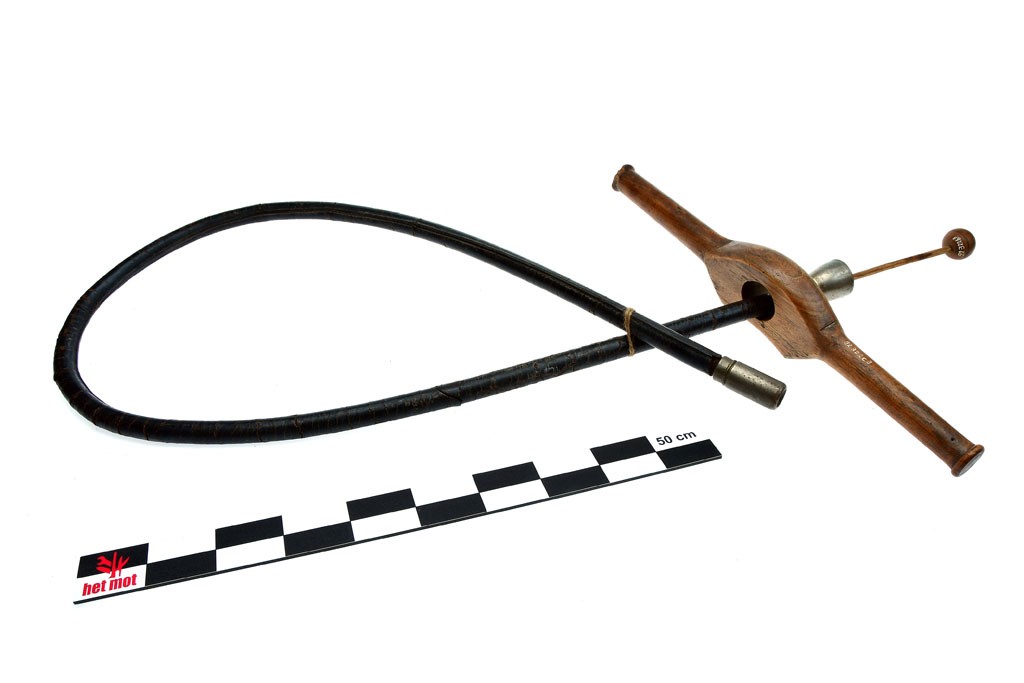
Probang (cattle)
This text can only be consulted in Dutch
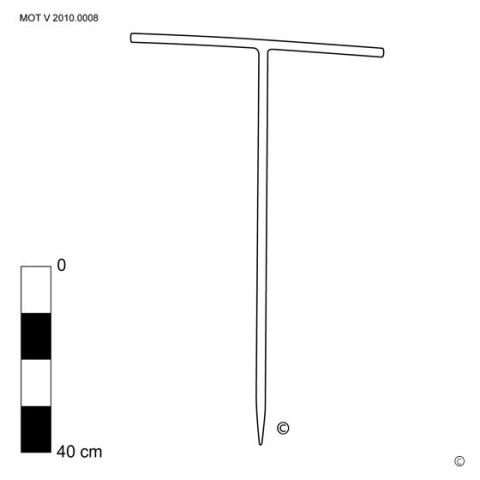
Probe
This text can only be consulted in Dutch
<https://www.mot.be/resource/Tool/probe?lang=nl>
